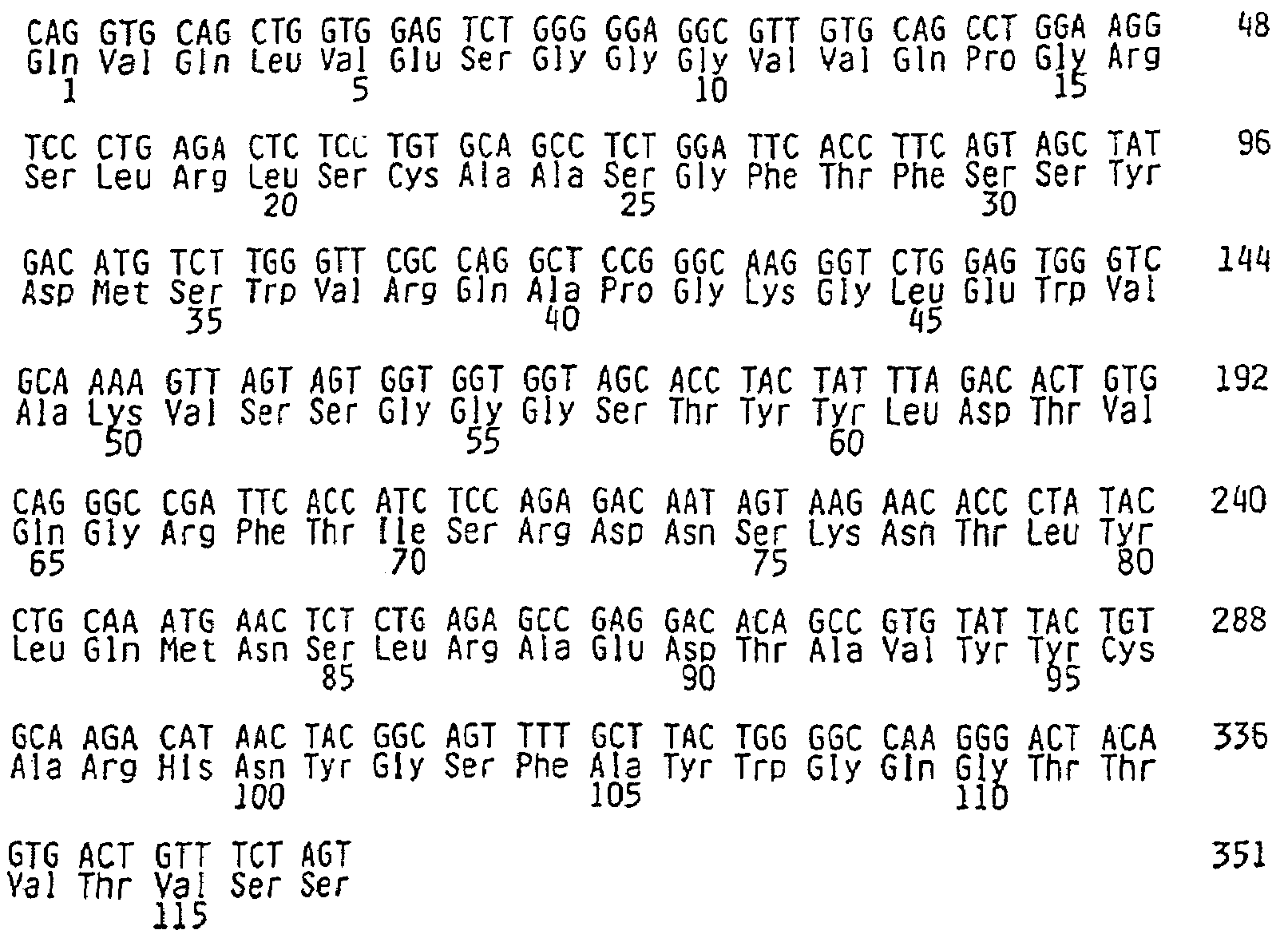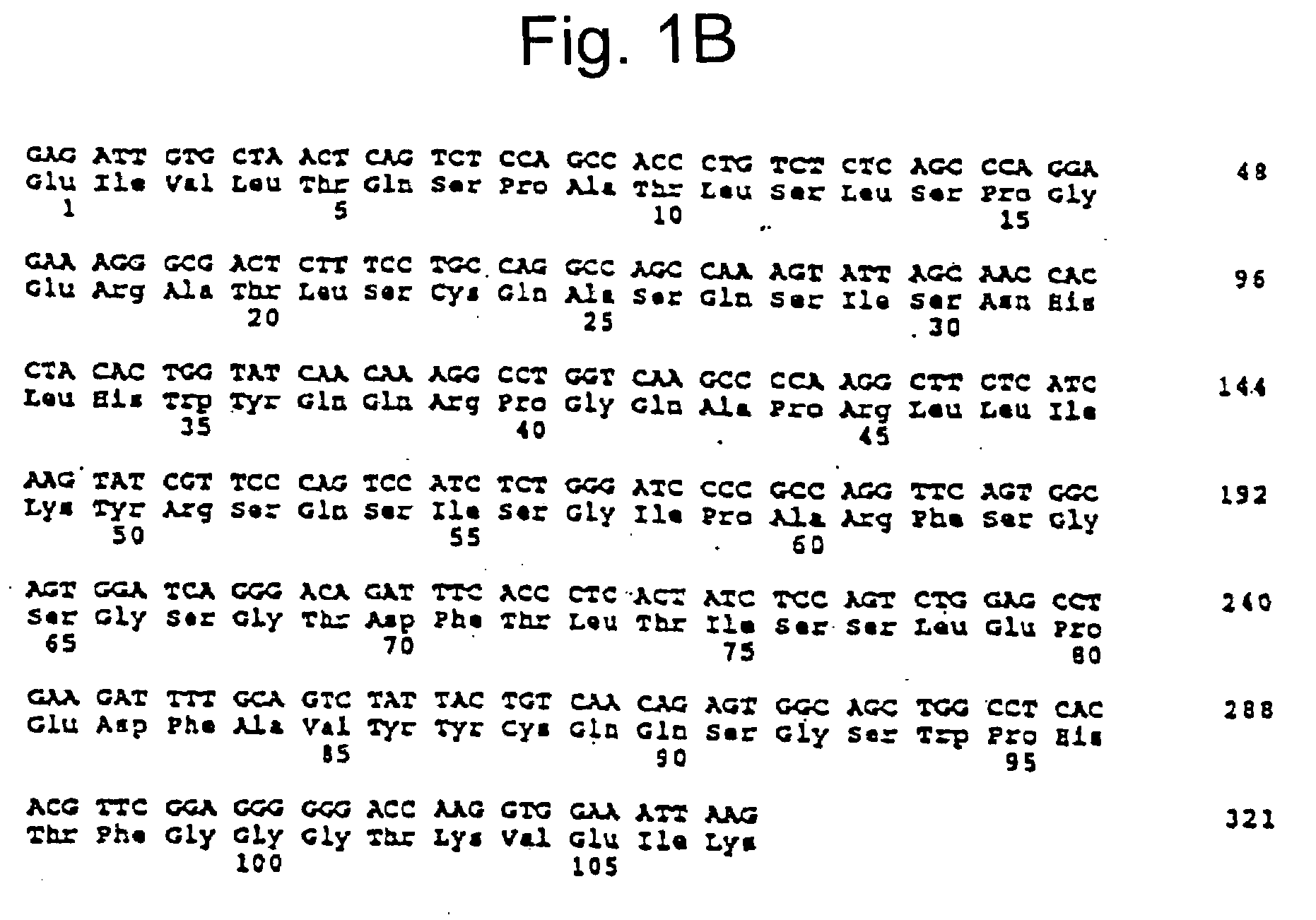Prevention or Treatment of Cancer Using Integrin alphavbeta3 Antagonists in Combination with Other Agents
a technology of integrin alphavbeta3 and other agents, applied in the direction of antibody medical ingredients, peptide/protein ingredients, instruments, etc., can solve the problems of increasing the number of tumors, so as to improve prevent, manage, enhance the effect of the prophylactic or therapeutic effect of the antagonis
- Summary
- Abstract
- Description
- Claims
- Application Information
AI Technical Summary
Benefits of technology
Problems solved by technology
Method used
Image
Examples
example 1
6. EXAMPLE 1
Treatment of Patients with Metastatic Breast Cancer
[0346]Certain embodiments of the invention, as well as certain novel and unexpected advantages of the invention, are illustrated by the following non-limiting example.
[0347]A study is designed to assess pharmacokinetics and safety of Vitaxin® in patients with metastatic breast cancer. Cancer patients currently receive Taxol or Taxotere. Patients currently receiving treatment are permitted to continue these medications.
[0348]Patients are administered a single IV dose of Vitaxin® and then, beginning 4 weeks later, are analyzed following administration of repeated weekly IV doses at the same dose over a period of 12 weeks. Vitaxin® safety and potential changes in disease activity over 26 weeks of IV dosing is also be assessed. Different groups of patients are treated and evaluated similarly but receive doses of 1 mg / kg, 2 mg / kg, 4 mg / kg, or 8 mg / kg.
[0349]Vitaxin® is formulated at 5 mg / mL and 10 mg / ml for IV injection. A for...
example 2
Determination of Binding Affinity for Integrin
[0352]αVβ3 and Epitope Mapping of Integrin αVβ3
[0353]Previous attempts to model the effects of Vitaxin® in animals have been limited by the inability of Vitaxin® to bind to αvβ3 on rat and mouse cells. Provided below are analyses demonstrating Vitaxin® binding to common laboratory species including hamster rabbit, guinea pig and monkey.
Results
[0354]
Staining of Placental TrophoblastsSpeciesLM609Humanized anti-αvβ3Vitaxin ®HumanND1-2+3-1+Cynomolgus monkeyND2-3+3-1+Guinea pigNDNegative1-2+HamsterNDNegative1-2+MouseNDNegativeNegativeRabbit3+Negative2-3+RatNDNegativeNegative
TABLE 3Immumohistochemical staining of placental trophoblasts. Fold Increase Over ControlHumanizedSpeciesCell LineCell TypeLM609anti-αvβ3Vitaxin ®F11HumanM21Melanoma65120730.99HMVECEndothelial4.36.58.9NDRatRG2Glioma2.30.840.9511RabbitVX7Carcinoma3.01.2171.0HamsterCCL-49Melanoma7.21.112NDPlacental tissue, a rich source of αvβ3, was collected either immediately after partur...
example 3
Immunohistochemical Procedures for Staining of the Integrin αVβ3 in Paraffin-Embedded Tissue Sections
[0364]Immunohistochemical detection of Integrin αVβ3 is effected using LM609 antibody. A number of parameters were tested for an optimal method allowing visualization of Integrin αvβ3 using immunohistochemical staining of Integrin αVβ3 in paraffin embedded tissue and are described as follows.
Procedures
[0365]Fixatives and tissue processing reagents used were as follows: 10% neutral buffered formalin, OminiFix 2000, STF, Paraformaldehyde, 37% (used at 4%), Paraffin, Propar, Ethanol, 200 proof (for fixation), and Ethanol, histology grade (for processing).
[0366]Tissue processing procedures (steps following initial incubation in different fixatives) were as follows:
ReagentTime and TemperatureH2O1 hour, room temperature 70% EtOH30 minutes, room temperature 95% EtOH30 minutes, room temperature 95% EtOH30 minutes, room temperature100% EtOH30 minutes, room temperature100% EtOH30 minutes, room...
PUM
| Property | Measurement | Unit |
|---|---|---|
| concentration | aaaaa | aaaaa |
| concentration | aaaaa | aaaaa |
| concentration | aaaaa | aaaaa |
Abstract
Description
Claims
Application Information
 Login to View More
Login to View More - R&D
- Intellectual Property
- Life Sciences
- Materials
- Tech Scout
- Unparalleled Data Quality
- Higher Quality Content
- 60% Fewer Hallucinations
Browse by: Latest US Patents, China's latest patents, Technical Efficacy Thesaurus, Application Domain, Technology Topic, Popular Technical Reports.
© 2025 PatSnap. All rights reserved.Legal|Privacy policy|Modern Slavery Act Transparency Statement|Sitemap|About US| Contact US: help@patsnap.com



